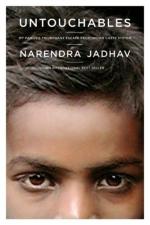
|
| Name: _________________________ | Period: ___________________ |
This test consists of 5 short answer questions, 10 short essay questions, and 1 (of 3) essay topics.
Short Answer Questions
1. On page 12, Wilkerson says that some contagions can only be managed with "vigilance." How is she proposing they should be managed?
2. What is the name of Gunnar Myrdal's 1944 study of race in America?
3. In "Through the Fog of Delhi to the Parallels in India and America," what is the rhetorical purpose of including the detail of the fog that Wilkerson sees when her plane lands?
4. According to "Pillar Number Four: Purity versus Pollution," what makes the United States's racial hierarchy different from those in the rest of the Americas?
5. In "Defining Purity and the Constancy of the Bottom Rung," what does Wilkerson note is referred to as "the most segregated hour in America" (128)?
Short Essay Questions
1. According to Wilkerson, how did slavery create the conditions for American stereotypes about Black people?
2. According to Wilkerson, what relationship exists between immigration or transportation to America and "becoming" white or Black?
3. According to Wilkerson in "An Old House and an Infrared Light," how are caste systems justified, and what is their real purpose?
4. Explain the analogy that Wilkerson makes between caste and a play.
5. In "Pillar Number Eight: Inherent Superiority versus Inherent Inferiority," what does Wilkerson say underlies each of the first seven "pillars" she has already described?
6. What is the rhetorical purpose of Wilkerson telling the story about the man who refuses to believe that she works for the New York Times?
7. Explain the titular analogy in "An Old House and an Infrared Light."
8. What explanation does Wilkerson give of the origins of caste in Hindu scriptures in "Pillar Number One: Divine Will and the Laws of Nature"?
9. What explanation does Wilkerson give of the justification for slavery in Christian scriptures in "Pillar Number One: Divine Will and the Laws of Nature"?
10. What is the rhetorical purpose of including the anecdote about Willie James Howard in "Pillar Number Three: Endogamy and the Control of Marriage and Mating"?
Essay Topics
Write an essay for ONE of the following topics:
Essay Topic 1
Choose a work of fiction or poetry by an American Afrofuturist author to read. (Yes, Black Panther comics count.) Write an essay in which you explain the relationship of ideas in Caste: The Origins of Our Discontents to the ideas conveyed by the work of fiction or poetry.
Essay Topic 2
Write an essay in which you analyze Wilkerson's use of personal anecdotes in Caste: The Origins of Our Discontents. Your essay should be organized around a thesis that makes a claim about the rhetorical purpose and effectiveness of these anecdotes. Support your claims with evidence from the text.
Essay Topic 3
Write an essay in which you explore the understanding of Biblical defenses of slavery among Christians in America today; how do they reconcile these passages with a modern world that believes slavery is morally reprehensible? Cite your sources in MLA format.
|
This section contains 1,073 words (approx. 4 pages at 300 words per page) |

|




